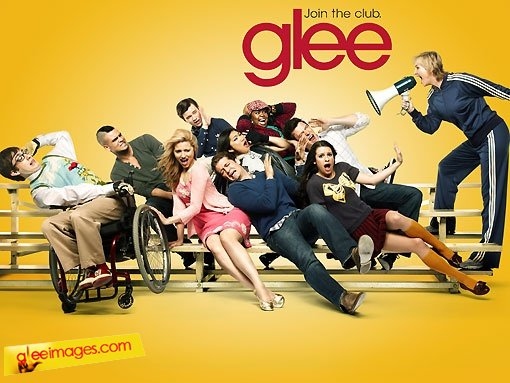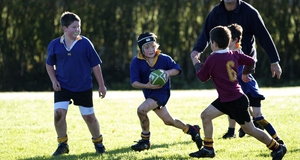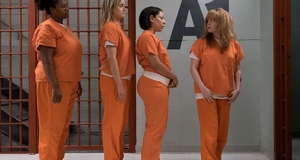Challenging Stereotypes in Glee, or Not? Exploring Masculinity and Neoliberal Flexibility
By
2013, Vol. 5 No. 02 | pg. 1/2 | »
KEYWORDS:
The popular television show Glee (2009-current) features a fictional glee club, the New Directions, which – in the words of the choir director character – is made up of students from “just about every race, religion, sexual orientation and clique.”[1]2 The cast does include all kinds of characters, but despite its superficial diversity, the show does not challenge dominant ways of thinking. In this paper, I show how neoliberal flexibility operates in Glee, where minorities are used as props to further the main plots that revolve around the ‘normal’ characters (those who are thin, straight and white). Through this flexibility, Glee leaves the gender/sex binary and biological essentialism unchallenged, and then makes ‘tolerance’ of homosexuals and ‘respect’ for other minorities a part of masculinity instead of dismantling this advantaging system.  In order to show how Glee reinforces conventional understandings of sex, gender and sexuality, I first provide an overview of the assumptions that underpin popular culture today. The dominant view is dualistic. Since the seventeenth century, sex has been widely understood through a two-sex model, in which there are two options: male or female. In order to show how Glee reinforces conventional understandings of sex, gender and sexuality, I first provide an overview of the assumptions that underpin popular culture today. The dominant view is dualistic. Since the seventeenth century, sex has been widely understood through a two-sex model, in which there are two options: male or female.
‘Normal’ people are expected to ‘naturally’ embody the gender norms associated with their ‘biological’ sex. Although sex does not fall neatly into two categories, ‘males’ are supposed to act masculine and ‘females’ are supposed to be feminine. Sexuality, supposedly a self-evident, biological truth, is also taken to be an important identity category; heterosexuality (attraction to the opposite sex) is thought to be ‘normal,’ and anything else is not. People who do not conform to these categories are generally stigmatized or forced to take sides. The football coach on Glee, for example, is named Shannon Beiste. Her last name is clearly meant to highlight her transgression of gender norms as a large woman with a low voice who works in a ‘masculine’ profession. Another character, one of the choir members, is also defined by his abnormality – his attraction to men.3 Although Kurt Hummel wears flannel and listens to country music in Season 1, in an attempt to be or at least to appear to be straight, he is unable to overcome his supposed inner truth. Eventually Kurt embraces his femininity, calling himself an “honorary girl” and lamenting that his stepbrother Finn doesn’t want to have “little lady-chats” late at night.4 It is important to note that in our society and on the show, the two sexes and genders are not treated equally. In patriarchies, men are generally privileged over women, and masculinity is valued over femininity.5 As socially constructed-concepts, though specific understandings of masculinity and femininity can change in different contexts;6 traditionally, masculinity has been defined and enforced through homophobia, but Glee condemns this behavior.7 But instead of challenging the sex/gender binary and sexist ideology behind masculinity, the show merely expands masculinity to incorporate tolerance of (‘naturally’ weak, effeminate) gay men, and it deploys the same kind of gender policing that traditional masculinity uses to garner support for gay rights. The show’s Super Bowl special, "The Sue Sylvester Bowl Shuffle,” shows how Glee expands masculinity and then invokes it to enforce the then-modified, but still maintained, system.8 After she witnesses the football team and the glee club exchange countless sexist and homophobic slurs (Karovsky says of Finn, “Hudson’s a frickin’ girl”; Finn says to Karovsky, “You’re always calling everybody gay, but I never see you with a girlfriend”), Coach Beiste mandates that her players join the New Directions and perform a halftime number with the choir at their championship game. David Karovsky, a closeted gay bully, quits the team and convinces most of his teammates to do the same, so the remaining players (the boys in the glee club, all of whom – except for Kurt – play football9) have too few members to compete. The “glee club girls” volunteer to join so that the boys can play. “Stop screwing around, it’s not cool,” Mike Chang says to this suggestion, to which Lauren Zizes, the fat wrestler replies, “What’s not cool is you guys not respecting women enough to realize we’re perfectly capable of playing football.” Unfortunately, Zizes’10 character is allowed athletic ability, but the feminine female characters have no intention of actually playing. “You guys don’t really need us to play, you just need enough players out there to field a regulation team, so when they snap the ball, we’re just gonna lie down on the ground, we’re just gonna lie there!” Rachel explains. As the new co-ed team walks onto the field, the former football players ask, “What the hell are they doing?” to which Finn replies, “What you don’t have the balls to do.” During the game, Tina is tackled and falls to the ground, unresponsive. Finn, the knight in shining armor, is horrified, and so he has his right-hand man Puck convince the other players to return. “You're so afraid of being called geeks or losers or gay that you settle for being nothing,” Puck says in the locker room, and, emasculated by this charge, the players finally agree to rejoin the team. They sing and dance, then win their football game. The next day, Finn can’t convince Karovsky to stay in the glee club, but his ex-girlfriend Quinn has been charmed by his actions. “You were amazing this week, on the field and off,” she says, and she kisses him, won over by his performance. In this and other episodes, Glee teaches tolerance through masculinity. The characters push one another to expand their understandings of masculinity by using the same gendered language (“you don’t have the balls”) and the same tactics (punishing certain behavior by teasing and challenging others’ manhood) traditionally deployed to police gender performances. The weight of these insults and the effectiveness of this enforcement rely upon the acceptance of female inferiority and the fear of feminization. In his book Crip Theory, Robert McRuer writes that neoliberal capitalism has come to embrace a kind of flexibility, in which queer and disabled people appear in the media “in a discursive climate of tolerance, which values and profits from ‘diversity,’” so long as they are still subordinate to able-bodied, heterosexual characters.11 On Glee, masculinity is redefined to include acceptance and protection of homosexual characters – protecting (powerless, needy) gay characters is made a part of being a real man. Just as “chivalrous” men open doors for women and keep them “safe,” the glee club guys (a group which does not include Kurt) take care of the girly gay boy, whose role is to teach them lessons about their proper gendered roles in society. At their parents’ wedding, for example, Finn tells Kurt, “No one else has shown me as much as you about what it means to be a man.” But Finn hasn’t learned by example; he’s become a better man by protecting Kurt, who is frail and vulnerable. “Over the past few weeks, uh, some stuff’s gone down,” Finn says, “And I haven’t manned up like I should’ve. From now on, no matter what it costs me, I got your back. Okay?” As the source of everyone else’s self-esteem, Finn then alternates between singing to his girlfriend and his brother, who are both smiling and crying: “Girl, you’re amazing, just the way you are.”12 Masculinity is expanded to incorporate tolerance of gay men who have take on a female gender identity, but this does not actually challenge heteronormativity, masculinity, and the trivialization and exclusion of minorities or the rigid separation between male/female and man/woman. Gay men are simply shifted to the opposite term of these binaries, rather than blurring or contesting the divisions. Just as shows like Queer Eye for The Straight Guy emphasize the supposed division between ‘queer’ and ‘straight’ men, Glee naturalizes Kurt’s sexuality, incorporating his character back into the culture of the show through ideological dilution, which “ensures that the potential threat to the dominant culture posed by the subculture is ‘trivialized, naturalized, domesticated.’”[13] Kurt may not be a manly man, but he can be understood and accepted as a functioning female. This reinforces the naturalization of sexuality and the dualistic conception of gender. McRuer writes, “As long as we agree that gay men and straight men are distinct, and-incidentally-as long as we're looking at the straight guy, supposedly, we can all get along.”14 Some may say that one of Glee’s gay characters, Kurt’s boyfriend Blaine, seems to be an exception to this statement; Blaine identifies as gay, yet he is also masculine. “Blaine and I love football,” Kurt says, before admitting, “Well. Blaine loves football. I love scarves.”15Continued on Next Page » Suggested Reading from Inquiries Journal
Inquiries Journal provides undergraduate and graduate students around the world a platform for the wide dissemination of academic work over a range of core disciplines. Representing the work of students from hundreds of institutions around the globe, Inquiries Journal's large database of academic articles is completely free. Learn more | Blog | Submit Latest in Film & Media |
















